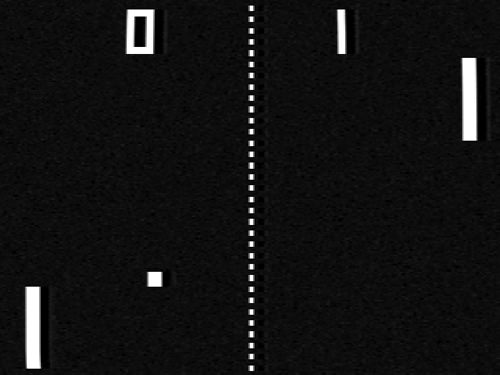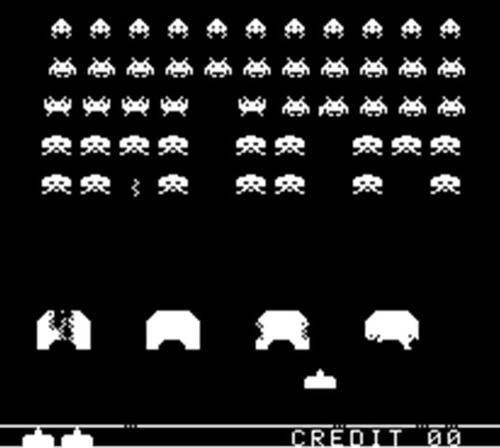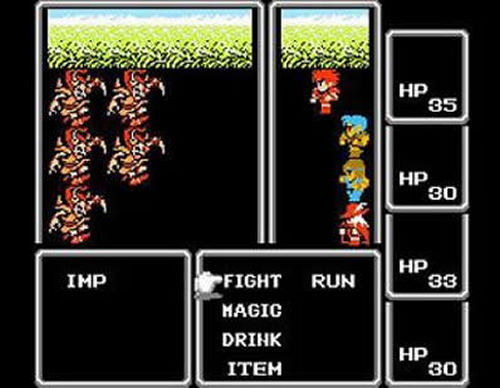Evolution of Video Games User Interfaces
Over the past few decades, video games have been refined by graphical enhancements, increased processor speed of video game systems and other technological advancements. As a result, their UIs have been evolving to adapt to the increasing complexity of video games.
The world had seen the emergence of technologies such as 3D graphics and motion sensors which allow for new game genres and UI to come to be.
Today, we shall bring you through the development of UI and how it has changed over the years and we are going to look at it through some of the more influential video games.
Evolution of Home Video Game Consoles (1967 – 2011)
Explore the evolution of home video game consoles from 1967 to 2011. From the Magnavox Odyssey to the... Read more
Defining UI
What we’re referring to as UI here is the way players can interact with the game and receive feedback of their interaction. It generally applies to the interactivity and concepts of a game.
This includes several aspects of gameplay such as the graphics, storyline, visual perspectives (point-of-view), controls, level designs, behaviors of AIs, etc.
The experience generated from the resultant gameplay or interaction is the objective of the game.
Mindless & Repetitive Games of Skill
The first type of gameplay the video game industry had for players was that involving a test of their control and/or reflex skills as they progress into the game with increasing difficulties.
The enemies within these games could be another human player or the AI and the objective was to stay alive by means of maintaining the necessary skill level to defeat them.
Tennis for Two (1958)
One example of such primitive games is that of Tennis for Two (1958), a game which simulates tennis or ping pong where each player manipulates the ball trajectory over a simplified tennis court from the side.
Players simply press the button to hit the ball when it is at their side of the net after adjusting the hitting angle with a control knob. The game goes on until a player misses.

Spacewar! (1961)
As one of two players in Spacewar! (1961), you are to control a spaceship to fire against your opponent. The additional challenge comes about with a star at the center of the screen that suck players toward it, even though players get to activate ‘Hyperspace’ that places their ship at a random location on screen.
The game may have a more complex gameplay than Tennis for Two, but the idea was still on reflex training.

Pong (1972)
It was also the same for the classic video game Pong (1972), where two players battle in out with their paddles onscreen and try to return the ball to their opponent without a miss.
When the opponent fails to hit the ball, the other player gains a point. It was about this time that game developers realize that players get an extra incentive to play when things start becoming competitive with player scores.

Space Invaders (1978)
The scoring feature was further popularized with the classic, Space Invaders (1978), which pitted players with cute pixelated aliens! A 2D fixed-shooter game, players have to move a laser cannon horizontally across the bottom of the screen and fire at descending aliens, which can fire back.
The game speeds up as time passes, and players spent hours to clear the aliens off the screen, logging in high scores that were posted for all to see.

Pac-Man (1980)
By the 1980s, skill-based games had evolved to include other features to test players on their reflex-and puzzle-solving capabilities. Scores, power-ups and avoiding enemies (versus confronting and killing them) in classic hits like Pac-Man (1980) took game development further.
Navigate through a maze and consume all the pellets to advance to the next stage, avoid the ghosts or consume power pellets to turn the tables temporarily.

Storylines & Interactivity
While skill games were evolving to include scores and other added features, another genre was emerging within the industry to spice up the content of games.
Colossal Cave Adventure (1975)
Colossal Cave Adventure (1975) was known as the first computer adventure game that eventually brought storylines into games. It had no graphical interface, only textual.
The draw of the game was its story-rich content and the interactivity involved. Players type in commands indicating what they wish to do next in each situation. Depending on the choices the players make, the story unfolds in different ways with different endings.

Donkey Kong (1981)
Developers eventually tried putting story elements and graphics together in their games; one of the pioneers was Donkey Kong (1981). It was one of the earliest game to have a storyline.
You play Jumpman who has to rescue the Lady from Donkey Kong and in-game characters began to take form – with pink dresses, red overalls and villain-trademark smirks.
Such details allow for players to identify with the characters and immerse themselves into the story.

Super Mario Bros (1985)
With the advent of scrolling computer display technology, games were soon no longer confined to a single, static playing field; page-flipping emerged. The expansion of the playing field allowed for side-scrolling video games, popularizing the platform game genre.
Super Mario Bros (1985) easily one of the most prominent games to grace our childhood banked on a cute and simple storyline, cute characters and multiple-stage quests.

Final Fantasy (1987)
Other games depend more heavily on storylines as the impetus for players to finish the game. Role-playing video games (RPG) arose from the evolution of story-based games and the ‘leveling-up‘ of game character experience was introduced.
Final Fantasy (1987), although not the first (RPG) available on the gaming market, was the game that popularized this genre.

From Games to Movies
Over the next two decades, the storylines in games continue to develop, to the point of actually becoming movie-worthy. As a matter-of-fact, some of them were actually made into movies.
For instance, the moderately successful film Lara Croft: Tomb Raider and its sequel, Lara Croft Tomb Raider: The Cradle of Life were created in 2001 and 2003 for the Tomb Raider video games series.
Other noteworthy game movies include Resident Evil (2002), Silent Hill (2006) and Prince of Persia: The Sands of Time (2010).
Tomb Raider (1996)

Resident Evil (1996)

Silent Hill (1999)

Prince of Persia: Sands of Time (2003)

The Quest for Realism
Back in the early days of video games, the limiting graphical capabilities and computing power shifted the focus of games to the little details like storylines and high scores.
Those were the times when ‘realism’ had more to do with how players interact and relate with the game than just graphics per se. But the 3D graphics in the 1990s changed that, allowing us to skip from 2D to 3D.
It made possible the idea of a ‘first-person’ point-of-view (POV) gameplay, which is pretty much you seeing the action through the eyes of the game character.
Such gameplay has been popularized with first-person shooter (FPS) games such as Wolfenstein 3D (1992). It may not be the firstborn of the genre, but it laid the path for classics such as Doom (1993) and Quake (1996).
Wolfenstein 3D (1992)

Doom (1993)

Quake (1996)

Open-World & Non-linearity Gameplay
Yet another major milestone was reached with the rise of 3D open world action-adventure games following the release of Grand Theft Auto III (2001).
Following in the footsteps of its predecessors, Grand Theft Auto (1997) and Grand Theft Auto 2 (1999), GTA III afforded players with a considerable level of freedom to explore the virtual world and options in fulfilling certain objectives.
The switch from the usual top-down view of GTA and GTA 2 to roaming the streets and interacting with objects and characters in GTA III endorsed the open world concept. No more loading screens as your character crosses from one stage to another, or invisible boundaries where you cannot surpass.
Nonetheless, the game stayed true to its non-linearity gameplay concept from its first two games of the series.
The resultant paradigm of open-ended game design and open world concept by GTA III was adopted by many video games that follow, thereby making it one of the most influential games of all time.
GTA (1997)

GTA 2 (1999)

GTA III (2001)

Physics Engine
While game content is also crucial to the players’ gaming experience, one must play for an extended period of time to feel the ‘realism’. Graphics, on the other hand, have a more direct impact on players since they are the in the front line of exposure to the players.
In the years that follow the rise of 3D games, developers have focused on making games more detailed and life-like in terms of its presentation. Equally important is the gameplay physics of the game, comprising of movements and reaction from the physical environment.
For Every Action
Games like Dirt (2007) featured physics where car controls were realistic and players could witness car parts flying and falling off in car crashes.
In a similar vein, Crysis (2007) used its own physics engine to create a lifelike gameplay where objects fall and spin off naturally with accompanying bullets and explosions. Check out the awesome demo of the physics engine.
Dirt (2007)

Crysis (2007)

We have also seen the transition of gameplay physics from Ragdoll to the Euphoria physics engine. Both are commonly used to physically simulate the death of game characters.
Ragdoll Deaths
Before there was the Ragdoll game physics, character death sequences were often repeated because the animations were already created beforehand. With Ragdoll, the character will collapse to the ground much like a ragdoll.
Some games that used such an engine were Hitman: Codename 47 (2000), Halo: Combat Evolved (2001) and Uncharted: Drake’s Fortune (2007).
But for obvious reasons one can see, it still wasn’t realistic enough.
Hitman (2000)

Halo: Combat Evolved (2001)

Uncharted: Drake’s Fortune (2007)

The Euphoria Engine
The Euphoria engine was more complex and realistic because it takes into account the virtual skeleton and muscles of the character, and even contains self-preservation behaviors built within.
This makes the movement adaptive and interactive in accordance to the gaming scenario, as evident in newer games such as Grand Theft Auto IV (2008), Star Wars: The Force Unleashed (2008) and Max Payne 3 (2012).
GTA IV (2008)

Star Wars: The Force Unleashed (2008)

Max Payne 3 (2012)

Here’s an example of the comparison between both engines.
Physical Simulation
Developing in parallel is physical simulation of controllers. There had been attempts to improvise the gaming experience for players by having realistic controllers since the beginning of the gaming history.
Some of the earliest usage of physical props for games include the light gun for Shooting Gallery (1972) and a steering wheel for Gran Trak 10 (1974).
Then came Guitar Freaks (1998), a rhythm game from the genre of music-theme action video games which showcased the guitar as a controller. And the world saw another side of immersive, realistic gaming.
The first guitar controller game to be released was an instant hit with Japanese gamers. However, it wasn’t until 2005 before the Guitar Hero franchise in 2005 took things outside of Japan.
Shot-gun Style Light Fun For Shooting Gallery (1972)

Advertisement Poster for Gran Trak 10 (1974)

Guitar Freaks (1998)

Controllers for Guitar Hero series (2005 – 2010)

Guitar Hero (2005)

Guitar Hero was so well-received by the masses that it had been recognized as a cultural phenomenal, sparking the public’s interest with the actual musical instrument itself.
Players may feel as if they were playing an actual guitar, except that it was just the controller for a game that anyone could play and master. Without the special guitar controller, Guitar Hero would not have attained the same level of success as it did.
Sports Consoles And Controllers
From there, non-orthodox controllers developed. Motion controllers like Wii Remote (2006), which was packaged along with the Nintendo Wii console (2006).
The launch title, Wii Sports showcased the motion-sensing capabilities of the remote. Players get to choose from five sports games to play with, namely tennis, baseball, golf, boxing and bowling.
For each individual game, players had to execute real-life motions while holding the controller, such as punching and swinging. As a result, players of all ages including young children and the elderly were able to grasp the controls of the games and adapt to the gameplay UI easily. Suddenly video games became a great way to lose weight.
Wii Sports soon became commonplace in social gatherings as a way of bonding with family and friends by means of friendly competitions. The game went on to become the best-selling video game of all time (as of 2012).
Online Mii Editor For Nintendo Wii
Note: The onnline Mii Editor is no longer in service. To edit your Mii character or avatar, you... Read more
Wii Remote (2006) With Nunchucks Plugged (left)

One-Player Wii Boxing from Wii Sports (2006)

Two-Player Wii Boxing from Wii Sports (2006)

Full-body Movement
Finally, the breakthrough technology of full-body movement control was demonstrated with the release of Kinect Adventures! (2010) that came bundled with Kinect.
Using its motion camera, Kinect games track the full-body motion of players as they shift left or right, move towards or away from the sensor and acquire or hit targets.
Kinect (2010)

One-Player Rally Ball from Kinect Adventures! (2010)

Two-Player River Rush from Kinect Adventures! (2010)

These bundled mini-games utilized one or more of such capabilities and allowed two players to compete or co-op in either split-screen mode or online mode in Xbox Live multiplayer.
The technology spelled out the opportunities for upcoming games to tap into full-body motion control sans controller user interface.
The future UI of video games may very well evolve along such a control concept.
The Future Of Video Gaming UIs
One observation we can all make is that, thanks to improved graphical and computing capabilities, game realism has become quite a primary focus of developers in recent years.
As such, one would expect the future progression of video games to be more detailed, life-like and immersive.
Controls will also get more precise and intuitive to the player than the existing full-body movement detection technology of Kinect.
New Ways To Interact
One might expect to see gamers controlling with their gazes by means of eye-tracking camera technology or even with their thoughts via detection of brainwaves!
As user interface develop further and break boundaries, the use of new wearable gadgets may take over, or the industry may go in the way of Augmented Reality (AR) for instance like Battlefield 5 on Glass.
How Augmented Reality Is The Next Big Social Experience
First coined in 1990 by Tom Caudell, a researcher at aircraft manufacturer Boeing, 'augmented reality' used to refer... Read more
3D Printing Technology
The much-anticipated commercialization of affordable 3D printing hardware may mean that players will soon be able to create and customize any physical props to serve as controls for games, much like the many plastic Wii add-ons for its remote. Holding a game weapon sure beats pretending to hold a weapon.
Conclusion
There are many ways things may unfold for the gaming industry. Not many would’ve expected guitar controllers to become such a huge success following the release of Guitar Freaks and Guitar Heroes, which inadvertently resulted in the rise of other non-orthodox controllers and consequently even a console war over motion controllers.
Novel genres have sprung up unexpectedly at the same time as well. As you could see throughout the history of video games user interface above, technological advancements play an crucial role in charting the paths that the industry take.
No matter how video games interface may evolve from now on, the end product which all developers will always keep an eye on shall always be that of the players’ experience.